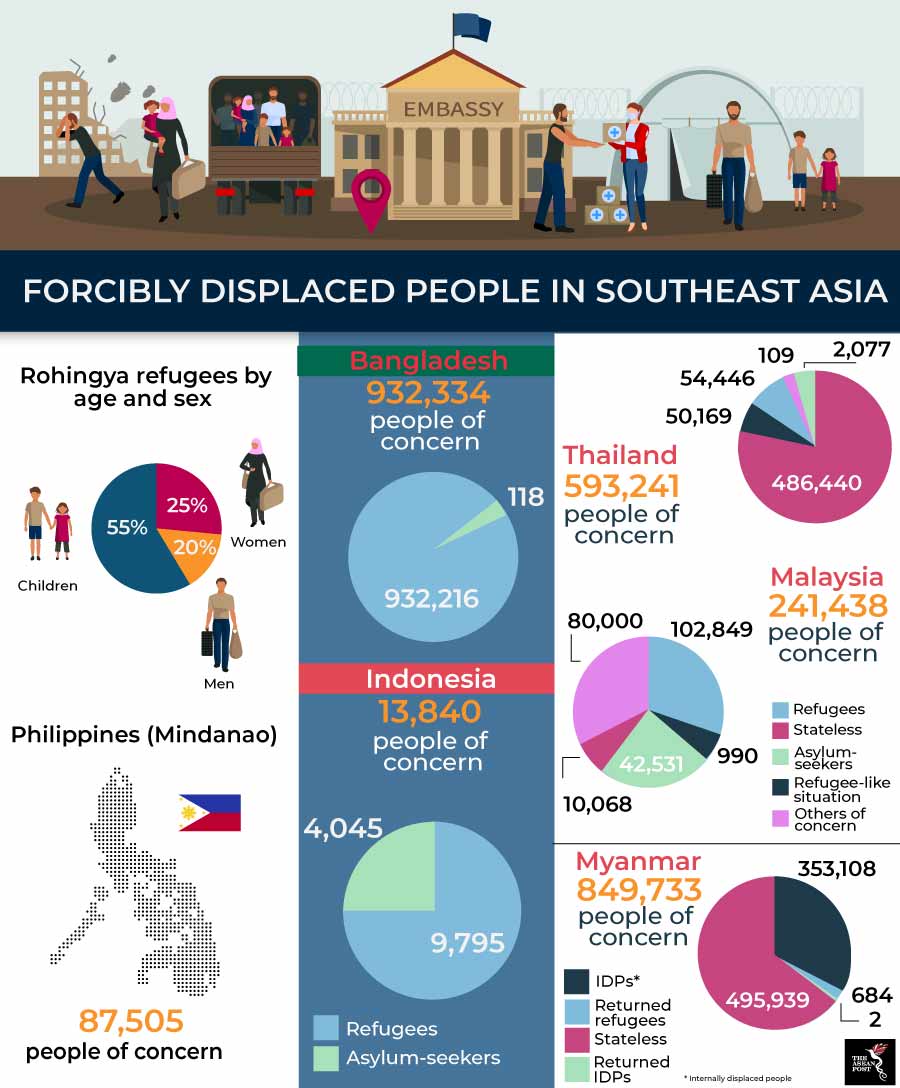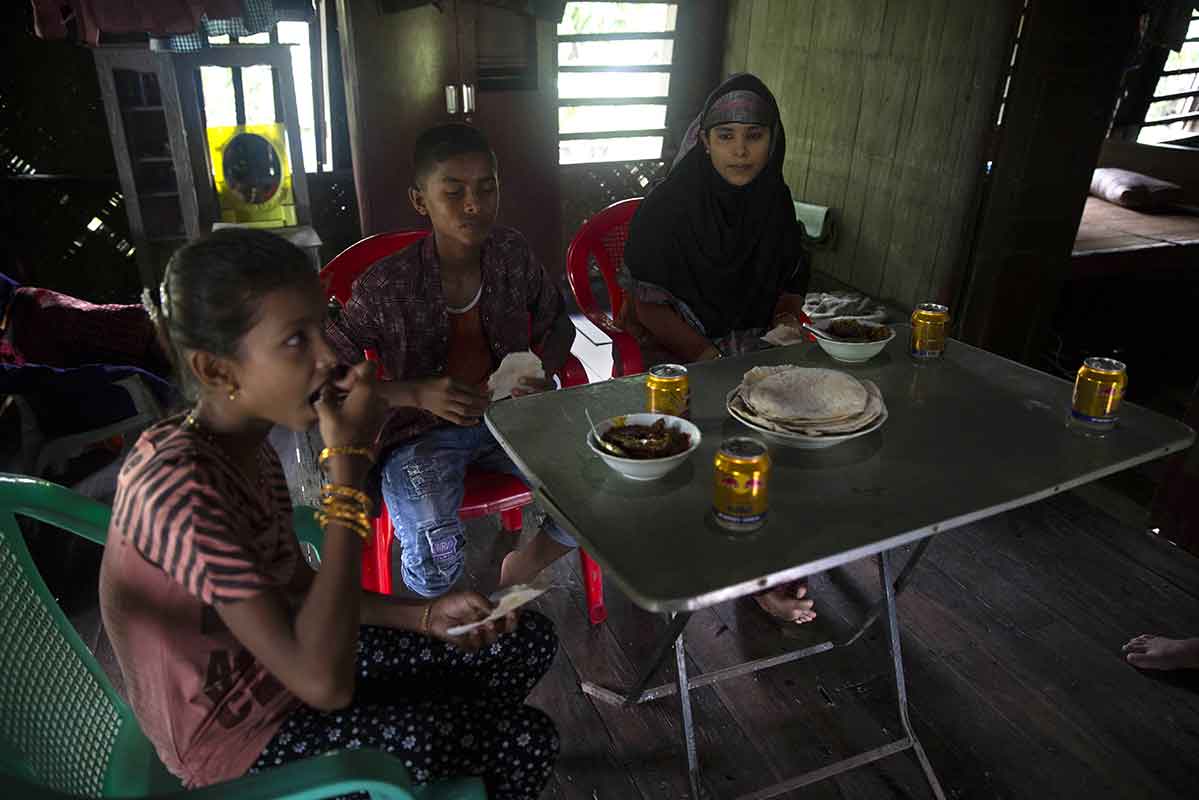Eid-ul-Fitr marks the end of Ramadan, the Islamic month of fasting. While Muslims in ASEAN share the Ramadan rituals of fasting, charity giving and Tarawih (additional) prayers, the celebration of Eid-ul-Fitr varies according to the region, culture and traditions passed down through generations. Eid celebrations could last from three days up to 30 days, depending on where one lives.
Although Eid-ul-Fitr is rich with cultural significance, the day usually begins with the morning Eid prayer followed by visiting families and friends to enjoy a great feast. Many Muslims would also don newly bought traditional dresses in a variety of bright colours.
In Malaysia, Eid is known as ῾Hari Raya Aidilfitri᾽. City folks normally travel home in a tradition known as balik kampung (return to village), to the homes of their parents in order to seek forgiveness from them and pray together as a family. Gifts are also distributed by elders to the children, usually in the form of money. Special dishes served such as ketupat (a type of diamond-shaped rice dumpling) and rendang (spicy meat dish) are also common among other Muslims in the region.
Eid or ῾Lebaran᾽ as it is known in Indonesia also marks a major exodus, where many Muslims travel back to their hometowns ahead of time in a tradition known as mudik. Lebaran is celebrated with traditional food such as ketupat, which symbolises togetherness.
The minority Cham Muslims in Cambodia also celebrate the occasion with a feast.
In predominantly Catholic Philippines, Muslims gather in public parks to perform their Eid morning prayers.
In other countries where Muslims are a minority, Eid-ul-Fitr is not a public holiday. Nonetheless, the Muslim communities there usually gathers among themselves to celebrate the day with food and cultural activities.
Eid for the Rohingya
For displaced Muslims like the Rohingya, Eid-ul-Fitr is celebrated with food aid and charity, and is not as joyful. There are now 68.5 million people forcibly uprooted from their homes. From this number, 25.4 million are refugees and 3.1 million are asylum-seekers. More than half these refugees come from Muslim majority countries.
The 2017 genocidal attacks against the minority Rohingya population in Myanmar’s Rakhine State has led to their mass exodus to Bangladesh. Refugee camps were set up in Cox’s Bazar, where Kutupalong camp is known to be the largest with 620,000 people. Others who continued west ended up in camps near Delhi and Hyderabad in India, and are estimated to be around 17,500 people.
This year, approximately 370,000 Rohingya children will spend their second Eid as refugees in hot, and cramped huts. Last year Rohingya children enjoyed merry-go-round rides while the adults staged an hour-long protest demanding Rohingya citizenship and security from the United Nations (UN) and Myanmar government.

The right to Eid
For some, even showing outward signs of being Muslims, like praying can get them labelled as extremists and sent to “re-education camps”. The Uighur in Xinjiang, China face religious restrictions such as being denied the right to fast during Ramadan and forbidden from wearing traditional dresses. Celebrating Eid-ul-Fitr for them would be extremely hard.
The Uighur had a long tradition of celebrating the Eid-ul-Fitr holidays with traditional dances and songs, as well as congratulatory poems. They typically went house to house to celebrate Eid, sharing meals with families and snacking on nan (flatbread), fruit and deep-fried spiral dough known as “sangza”.
Up to three million Muslim Uighurs have been detained by the Chinese government. The cultural genocide committed by the Chinese government has been devastating, causing Uighurs (and Muslims in general) living abroad anxiety over the well-being of their families back home.
Eid in host countries
The UN Refugee Agency (UNHCR), announced that worldwide displacement is at an all-time high, and the millions of displaced Muslims will not be able to spend Eid in the comfort of their homes. Fortunately, they still find ways to celebrate Eid with hope and resilience.
The Southeast Asia region takes in many refugees and asylum-seekers from all over the world. There are currently 90,200 Rohingya refugees registered with the UNHCR in Malaysia, and another 22,780 refugees from other nations.
For Mohd Ayash Soyad Nur, celebrating Eid in Malaysia “is much more fun than in my country, Myanmar, which is lacking in many things.” He appreciates the peace the country has to offer, looking forward to building a better life. Eid in Myanmar is celebrated similarly as in Malaysia, with new clothes and big feasts.
While several fundraisers have been set up during the month of Ramadan to bring some joy to refugees having to spend another Eid away from home, returning home is what they truly hope for. Back in Cox’s Bazar, Rohingya refugee, Janara Begum prays that “the heat reduces and pray more that we may go back home to Myanmar and live peacefully.”
Unfortunately, as Rohingya refugees in Cox’s Bazar look forward to another dismal Eid, abnormal weather patterns and the looming threat of drought or flooding remains constantly at the back of their minds this year.
Related articles:
The future of aviation in Southeast Asia
